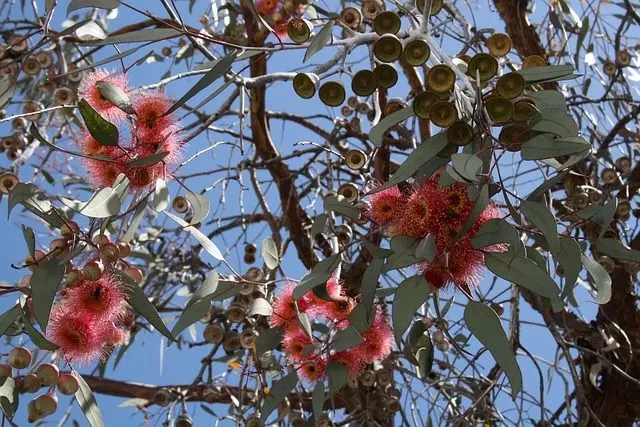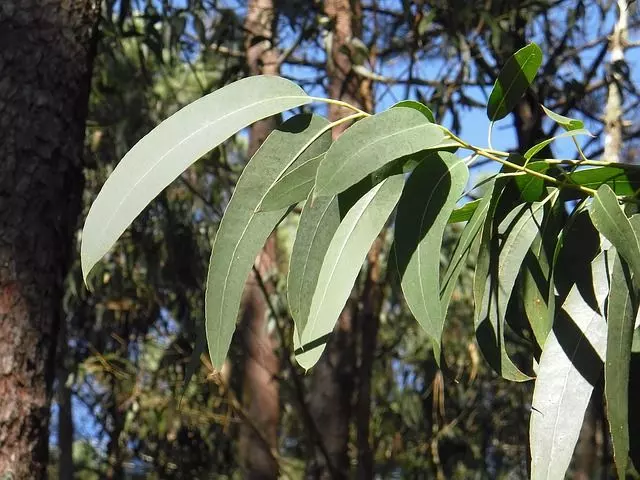Its great aroma and its medicinal properties are two great motivations to learn about the process of how to plant eucalyptus. This plant belongs to the Eucalyptus genus, a group of trees that are cultivated for forestry purposes since they offer good quality wood. Learn all about How to Care for Eucalyptus in this article.
Table of Contents
Characteristics of the Eucalyptus
Among its most outstanding characteristics, we can highlight that they are very leafy and can measure up to 165 ft (50 m) in height. Due to its large size, it cannot be planted in small gardens or indoors.
Eucalyptus is a fast-growing plant, easily surpassing 10 ft (3 m) in height in just one year. Some species can be planted indoors, but they will not last long in pots and must be quickly repotted to a large area. It is also possible to plant eucalyptus indoors from dwarf species, but they will still need to be repotted at some point. The only option to have one of these trees at home is to apply the bonsai technique.
In Australia, where it originated, it is used as food for animals and was used to prepare bonfires. Nowadays, and all over the world, this tree is recognized for its many medicinal properties, besides contributing to the chemical industry. This is because the properties of the oil from its leaves can be used to manufacture solvents, perfumes, repellents, and some medicines. The plant is also used in the timber and paper production sectors.

How to Care for Eucalyptus
These are the main cares needed for this great tree.
How to Care for Eucalyptus: Lighting
The more than 700 species belonging to the genus Eucalyptus are very well adapted to tropical and subtropical climates. This characteristic indicates that they are not able to withstand strong frosts, as well as very cold winds.
Regarding how to plant eucalyptus, the most important environmental requirement is sunlight. This plant should be exposed to as much sun as possible. This means that warm climates will allow it to develop much healthier.
How to Care for Eucalyptus: Substrate
The process of how to plant eucalyptus requires clay or clay loam soil, rich in organic matter and you must ensure that it has good drainage for the good development of the plant.
As for nutrients, soils with good fertility are recommended, since the eucalyptus subtracts large amounts of nutrients from the soil. It is very important to provide nutrients to the soil to maintain a healthy and lush tree. In figures, we can assume that the soil should have a pH of 6 or close to 5, with a certain tendency to acidity, characteristic of clay soils.
How to Care for Eucalyptus: Watering
In the early stages of the plant, it is advisable to apply frequent watering, avoiding excess water. As the tree grows taller and develops deep roots, the frequency of watering can be reduced. It can even survive without our help in rainy seasons.
How to Care for Eucalyptus: Fertilization
The nutrient most demanded by the eucalyptus tree is calcium. It is for this reason that you should incorporate calcium into the soil just before planting. This mineral also helps to raise the pH of the soil in case it is too acidic, as can occur in clay soils. This will make other nutrients available to the plant.
How to fertilize will depend on the fertility of the soil. Organic matter or natural fertilizers from composting or logging should be incorporated constantly. Liquid humus, rich in nutrients such as calcium, is obtained from lumber farming.
At the time of sowing, 1.5 Ounce (40 grams) per plant of a complete formula can be applied, providing the same amount of nitrogen, phosphorus, and potassium. However, a formula with a higher amount of phosphorus can help the formation and strengthening of the roots. After two months of planting, nutrients should be replenished so that the plant can extract them from the soil.

How to Propagate Eucalyptus
The process of how to plant eucalyptus can be done in two different ways; by using cuttings or by sowing the seeds. Despite being a forest species, the seed is easy to germinate, and its sowing using cuttings is not very complex.
If you are going to propagate using cuttings, then you should use a rooter to grow it in a pot and then repot it, or you can also sow it directly in the final location.
Propagation by seed takes a little longer but can be a rewarding process for many people. Eucalyptus seeds are easy to germinate, and in 10 days at most, you will see the cotyledons emerging.
The first step to germinate the seeds is to soak them in water for 24 hours. Then you must place the seeds in a small pot with a fertile substrate and maintain the humidity until the plant is born. In this pot it can live until it is about 4″ (10 cm) high or when 3 true leaves are observed (not counting the cotyledons), then it should be repotted to its final place.
Before repotting, you should work the soil to avoid water stagnation and verify that the soil has good drainage.
Pests and Diseases
Soil Fungi
Eucalyptus is sensitive to some fungi, as they promote root rot and kill it silently. The main fungus affecting this tree is Phytophthora. We can also mention Corticium salmonicolor, which destroys the aerial part of the plant and can even affect the interior of the stem.
Defoliating and Sap-Sucking Insects
In its early stages, this plant is attacked by defoliating larvae and ants that consume the most tender areas.
Galls wasps, known as Leoticybe invasa, produce galls on the leaves and block the normal passage of sap. This causes young plants to weaken and stunt growth. Another important pest is the Phoracantha coccus (eucalyptus borer), which causes damage to the stem and branches. This causes the death of the part above the attacked part.
These are the most important pests we can find, however, there are also other insects, all of them defoliators.

